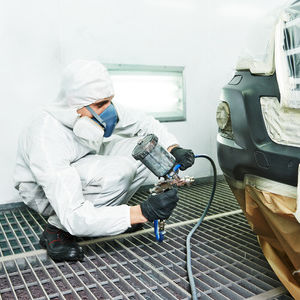Ventilation
Well-designed and maintained ventilation systems remove flammable vapors from the workplace and reduce the risk of fire and health problems. The amount and type of ventilation needed to minimize the hazards of flammable and combustible liquid vapors depend on such things as the kind of job, the kind and amount of materials used, and the size and layout of the work area.

An assessment of the specific ways flammable and combustible liquids are stored, handled, used, and disposed of is the best way to find out if existing ventilation controls (and other hazard control methods) are adequate.
- Some workplaces may need a complete system of hoods and ducts to provide acceptable ventilation. If flammable vapors are likely to condense, the ducts should have welded joints. Other workplaces may only require a single, well-placed exhaust fan.
- Use non-ferrous fan blades and shrouds, and explosion-proof electrical equipment in exhaust fan ventilation systems for these liquids.
- Regular cleaning of the ventilation system will decrease the severity of any fires and will reduce the likelihood of spontaneous combustion if some self-heating material is present.
- Ventilation equipment used to handle solvent vapors should meet the relevant fire code requirements.
Knowledge Check Choose the best answer for the question.
2-5. Ventilation systems for flammable or combustible liquids should use exhaust fans with _____.
You forgot to answer the question!
